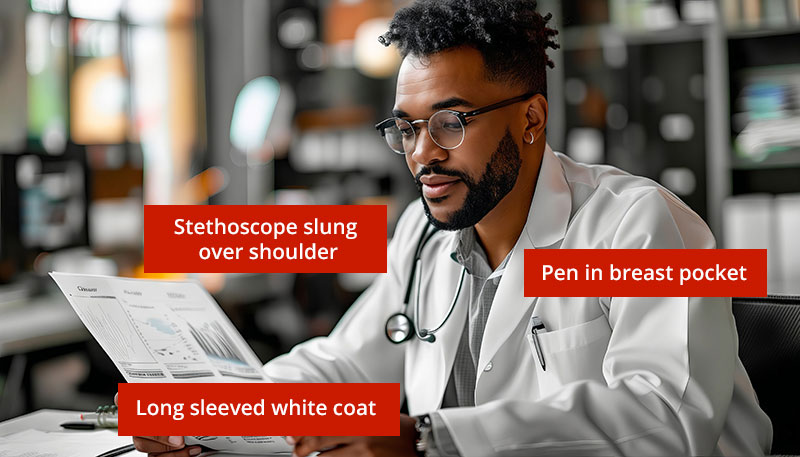Creating and sourcing healthcare images
Turas is a diverse platform with multiple purposes. There may be circumstances where you might need to use images that represent healthcare. This includes a range of different purposes, from ‘decorative’ and illustrative images to detailed instructional photos or videos.
When to use this guidance
This is not an exhaustive list, but covers key points to look out for when:
- planning and creating new visual assets, including photos, videos, animations and illustrations
- commissioning others to create new resources or visual assets
- curating visual assets from online image bank, libraries, colleagues, existing resources, and other sources
- quality assuring or updating existing learning resources
Checklist
The following checklist is particularly useful when reviewing new and existing imagery.
You should do this before starting your project or as early as possible. Please be aware that even images sourced from image libraries such as the NHS Scotland Photo Library can show inappropriate practice and must be checked.
Guidance is specific to care settings, so some practice changes. Please consult with appropriate staff in the relevant care setting.
Generative artificial intelligence (AI)
Generative AI is often trained on biased or inaccurate data. This can reinforce harmful stereotypes and show poor health and care practices. It is likely to create images that don’t accurately show Scotland's health and care staff, service users or locations. This kind of misrepresentation can erode trust and undermine the credibility of our content. It can also bring copyright, legal and reputational risks.
Human connection is crucial in the work we do. Health and care staff and patients are real people with unique identities, emotions, and experiences. Using AI to represent them can dehumanise them, instead of recognising their real-life humanity. Do not use generative AI to represent health and care:
- staff, patients or people
- location or interiors
Infection prevention and control
If you are unsure about any infection prevention and control practice, especially when creating materials covering clinical tasks, please refer to the National Infection Prevention and Control Manual. Alternatively you can get in touch with your local IPC Team for advice and quality assurance.
Staff, visitors and those being cared for
Personal information or sensitive data
- no personal information such as name badges or ID badges are visible
- no sensitive data is visible in the background of shots (for example patient record or IT passwords)
Clothing
- no staff in uniform outside the work environment, unless appropriate for their role
- no staff in the old staff uniforms
- all healthcare staff should have bare arms below the elbow (no long sleeves)
- no healthcare staff in open-toe or hard soled shoes
Refer to the NHS Scotland dress code
Hands and hair
- no healthcare staff wearing jewellery (except plain wedding bands)
- no healthcare staff with long hair that is not tied back and longer than above the collar
Items on the body
- no healthcare staff with stethoscopes around their necks
- no healthcare staff carrying pens or other items in breast pockets
Personal Protective Equipment (PPE)
- all staff are wearing the correct PPE for the task they are performing
Example of incorrect image
The following image is from Adobe Stock. This AI-generated image is a clear example of what to watch out for when selecting images.

Environment
- everything shown is in a decent state of repair
- no sinks with swan neck taps, in clinical settings mixer type taps are shown
- no sinks with a plug or overflow hole
- if running taps are shown, there should be no splashing water at the taps
- soaps and paper towels are wall mounted
- no supplies, waste, linen stored or placed on the floor
- appropriate waste receptacles are being used (for example correct bins used, no disposal of PPE in domestic waste)
- waste streams are indicated by colour and the correct colour must be shown
Diversity
It is important to use images which depict diversity among staff and service users. When sourcing images, you should give particular regard to opportunities for including the following:
- individuals of different sexes/genders
- individuals from a range of ages
- individuals from a range of ethnic groups
- disabled people as staff, as well as service users
- unless specifically intended, do not show healthcare staff or patients bottle-feeding babies.